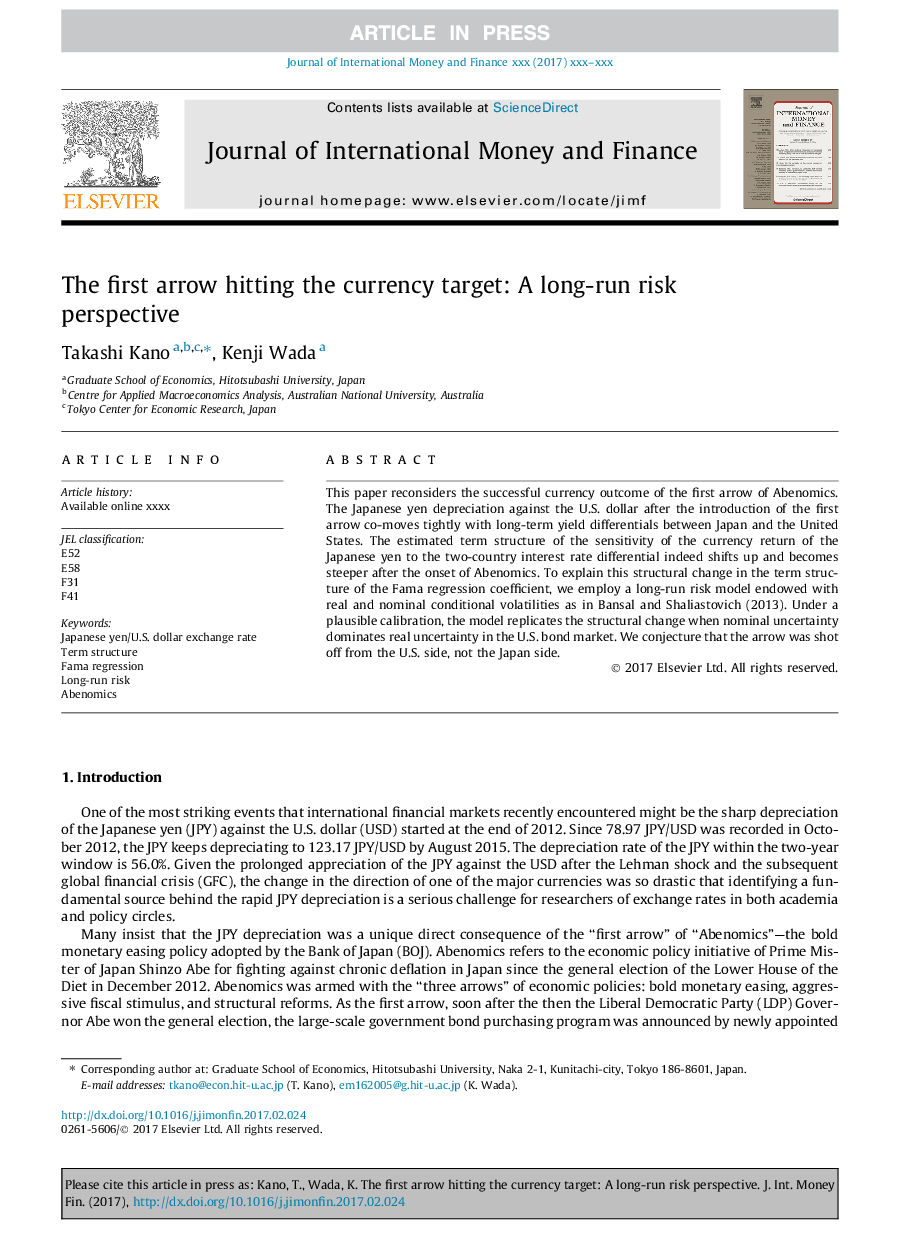| Article ID | Journal | Published Year | Pages | File Type |
|---|---|---|---|---|
| 5101130 | Journal of International Money and Finance | 2017 | 16 Pages |
Abstract
This paper reconsiders the successful currency outcome of the first arrow of Abenomics. The Japanese yen depreciation against the U.S. dollar after the introduction of the first arrow co-moves tightly with long-term yield differentials between Japan and the United States. The estimated term structure of the sensitivity of the currency return of the Japanese yen to the two-country interest rate differential indeed shifts up and becomes steeper after the onset of Abenomics. To explain this structural change in the term structure of the Fama regression coefficient, we employ a long-run risk model endowed with real and nominal conditional volatilities as in Bansal and Shaliastovich (2013). Under a plausible calibration, the model replicates the structural change when nominal uncertainty dominates real uncertainty in the U.S. bond market. We conjecture that the arrow was shot off from the U.S. side, not the Japan side.
Related Topics
Social Sciences and Humanities
Economics, Econometrics and Finance
Economics and Econometrics
Authors
Takashi Kano, Kenji Wada,
